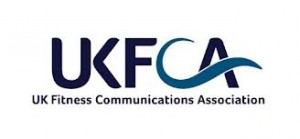Skip to content
Four Key Aspects of Your Marathon Training Not to be Ignored
With the spring marathons fast approaching and the training distances getting longer by the week, here are some tips to help you get through those 26.2 miles:
1) Your Running Shoes

It is strongly advisable to go to a specialist runner’s shop to seek advice on the best pair of trainers, as every individual has their own running technique and extra support in certain areas of the shoe may improve biomechanics of your running technique and reduce your chances of injury.
Make sure you buy your running shoes well in advance of the big day so you have time to wear them in. Wearing new trainers on the day of the marathon will be something your feet aren’t used to and will almost certainly give you lots of painful blisters.
There is a range of opinion on how frequently you should change your running shoes, but the general consensus seems to be every 500 miles. One approach is to alternate between two pairs of trainers, which makes them last longer. We have patients who do this and it works well because it means that when the marathon arrives, the trainers are comfortable but not too worn out, and it reduces the risk in the event of one of the pairs getting damaged.
2) Nutrition
A well-balanced diet is crucial to ensure that you have a sufficient intake of energy to cater for all the energy expended during your runs. It is recommended that at least 65% of your dietary intake is made up of carbohydrates while you are training. You can increase the carbohydrate content of your meals by adding extra amounts of rice, pasta, bread and potatoes.
It is important to drink water before and after long training runs. Try to not drink too much before your run, and if you sip water during the run it will help prevent you from getting dehydrated. Drinking plenty of water after the long runs will help your body to fully re-hydrate. This applies not just immediately after finishing your run, but also for the following 3 hours. When running long distances it is also important to replenish nutrient levels and drinking isotonic drinks will help you do this. Don’t change to a new brand of drink on the day.. It could upset your stomach!!
3) Stretching
Make sure you are stretching your muscles regularly – before running as a part of your warm up, and afterwards as a part of your cool down. When the muscles take such a heavy impact as they do in marathon training it is inevitable that tightness will occur, and this can start to impede performance and will increase your chances of getting injured. Stretching all of the major leg muscles is particularly important, but try not to neglect your upper body.
 You can hold static stretches for a good length of time (20-30 seconds is recommended, however, this can be modified depending on the type of stretch and outcome desired). This is especially important after your training, as the muscles naturally tighten up over the course of a long run, taking a prolonged amount of impact and adapting to running surfaces. Stretching after your training will lengthen the muscles and help to reduce the amount of stiffness you get between training sessions, as well as help to reduce your chances of getting common overuse injuries associated with running.
You can hold static stretches for a good length of time (20-30 seconds is recommended, however, this can be modified depending on the type of stretch and outcome desired). This is especially important after your training, as the muscles naturally tighten up over the course of a long run, taking a prolonged amount of impact and adapting to running surfaces. Stretching after your training will lengthen the muscles and help to reduce the amount of stiffness you get between training sessions, as well as help to reduce your chances of getting common overuse injuries associated with running.
Receiving regular sports massage between your long runs works well in combination with a good stretching programme. Sports massage helps to speed up the removal of lactic acid, which in turn speeds up your recovery between your training runs. It will also help prevent and reduce the build up of tightness in the muscles. We also see in clinic patients doing marathon training that come in for regular sports massage as an injury prevention measure.
4) Injury
If you have picked up an injury or ‘niggle’, then the phrase ‘a stitch in time saves nine’ certainly applies. It’s true that people involved in marathon training often experience various aches and pains during and after runs, but if it’s something which is not going away and training is actually making it worse, then it is better to get it looked at sooner rather than later.If you continue your training with an injury, it can not only make the injury worse, but it could also be doing some long-term damage to your body, depending on the type of injury. Feel free to contact me if you have an injury or ‘niggle’, and aren’t sure what to do about it.
So whether it be the London, Brighton, Paris or Manchester in the near future.. Or if you are looking further ahead to Berlin or NYC later in the year – plan your training and recovery sessions well.
Good luck all!!

will2016-01-18T18:56:52+00:00
Page load link


 You can hold static stretches for a good length of time (20-30 seconds is recommended, however, this can be modified depending on the type of stretch and outcome desired). This is especially important after your training, as the muscles naturally tighten up over the course of a long run, taking a prolonged amount of impact and adapting to running surfaces. Stretching after your training will lengthen the muscles and help to reduce the amount of stiffness you get between training sessions, as well as help to reduce your chances of getting common overuse injuries associated with running.
You can hold static stretches for a good length of time (20-30 seconds is recommended, however, this can be modified depending on the type of stretch and outcome desired). This is especially important after your training, as the muscles naturally tighten up over the course of a long run, taking a prolonged amount of impact and adapting to running surfaces. Stretching after your training will lengthen the muscles and help to reduce the amount of stiffness you get between training sessions, as well as help to reduce your chances of getting common overuse injuries associated with running.